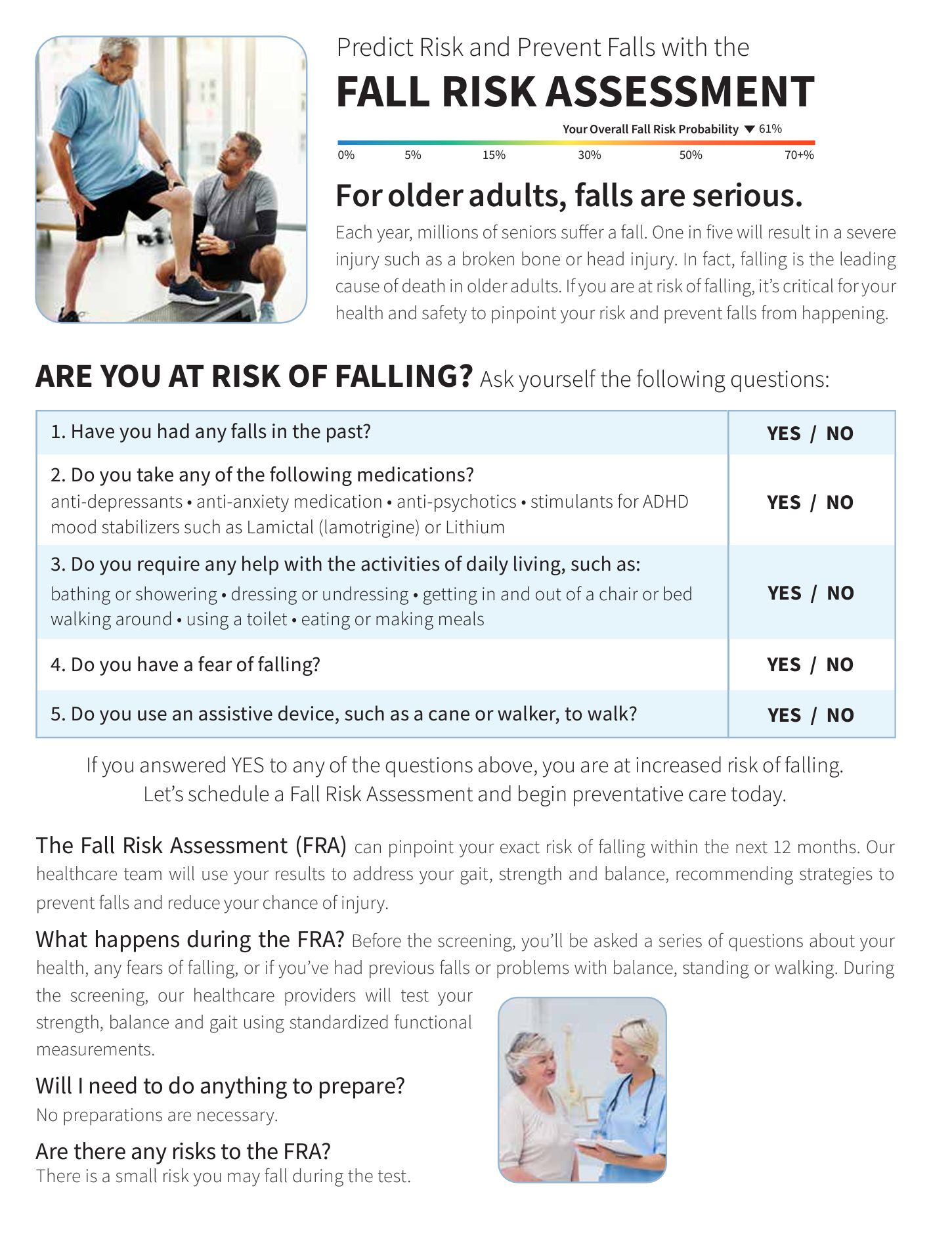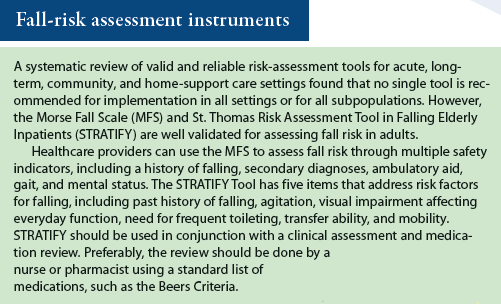The Definitive Guide for Dementia Fall Risk
The Definitive Guide for Dementia Fall Risk
Blog Article
How Dementia Fall Risk can Save You Time, Stress, and Money.
Table of ContentsThe smart Trick of Dementia Fall Risk That Nobody is Talking AboutWhat Does Dementia Fall Risk Do?The Ultimate Guide To Dementia Fall RiskThe 5-Minute Rule for Dementia Fall RiskDementia Fall Risk Can Be Fun For Everyone
Assessing autumn risk assists the whole healthcare team establish a more secure atmosphere for each person. Ensure that there is a designated location in your clinical charting system where team can document/reference ratings and record pertinent notes associated with fall prevention. The Johns Hopkins Autumn Risk Evaluation Device is just one of many devices your team can use to help avoid damaging medical events.Individual drops in healthcare facilities are usual and debilitating unfavorable events that persist regardless of decades of effort to minimize them. Improving communication throughout the analyzing nurse, care group, individual, and client's most included family and friends may reinforce loss avoidance efforts. A team at Brigham and Female's Healthcare facility in Boston, Massachusetts, looked for to establish a standardized loss prevention program that focused around enhanced communication and person and household engagement.

The innovation group highlighted that successful execution depends on patient and team buy-in, combination of the program into existing process, and fidelity to program procedures. The group noted that they are facing just how to make sure continuity in program execution during periods of situation. During the COVID-19 pandemic, as an example, a boost in inpatient drops was linked with restrictions in person involvement along with restrictions on visitation.
The 6-Minute Rule for Dementia Fall Risk
These occurrences are generally taken into consideration avoidable. To execute the treatment, companies need the following: Access to Loss suggestions sources Loss TIPS training and retraining for nursing and non-nursing team, including new registered nurses Nursing operations that enable client and family members engagement to conduct the falls analysis, ensure use of the prevention plan, and conduct patient-level audits.
The results can be extremely destructive, frequently speeding up individual decrease and creating longer hospital stays. One study estimated remains increased an extra 12 in-patient days after a client loss. The Fall TIPS Program is based on engaging clients and their family/loved ones across three main processes: assessment, individualized preventative treatments, and bookkeeping to ensure that patients are engaged in the three-step loss prevention process.
The client evaluation is based on the Morse Autumn Scale, which is a validated loss threat analysis device for in-patient hospital settings. The range consists of the six most typical reasons patients in medical facilities fall: the patient loss background, high-risk conditions (consisting of polypharmacy), usage of IVs and various other outside devices, psychological condition, gait, and movement.
Each risk variable web links with several actionable evidence-based interventions. The registered nurse produces a plan that integrates the interventions and shows up to the care team, person, and family members on a laminated poster or printed aesthetic help. Nurses develop the strategy while consulting with the patient and the patient's household.
Not known Details About Dementia Fall Risk
The poster works as an interaction tool with other members of the individual's treatment group. Dementia Fall Risk. The audit component of the program includes examining the client's expertise of their threat factors and avoidance plan at the unit and health center degrees. Registered nurse champs conduct at least five private interviews a month with people and their households to look for understanding of the loss avoidance plan

An estimated 30% of these drops outcome in injuries, which can range in severity. Unlike various other damaging occasions that need a standard professional feedback, autumn prevention depends highly on the demands of the patient.
The Only Guide to Dementia Fall Risk

Based upon bookkeeping results, one site had 86% conformity and two sites had over 95% conformity. A cost-benefit analysis of the Fall pointers program in eight health centers approximated that the program expense $0.88 per patient to apply and led to savings of $8,500 per 1000 patient-days in direct expenses related to the prevention of 567 drops over three years and 8 months.
According to the development group, organizations thinking about applying the program must conduct a preparedness assessment and drops prevention voids analysis. 8 Additionally, organizations need to make certain the Related Site needed infrastructure and process for implementation and create an execution plan. If one exists, the company's Autumn Prevention Task Pressure should click for more info be included in preparation.
Things about Dementia Fall Risk
To begin, organizations must make certain conclusion of training components by nurses and nursing assistants - Dementia Fall Risk. Health center team should assess, based on the demands of a medical facility, whether to utilize an electronic health and wellness record hard copy or paper version of the loss avoidance strategy. Carrying out groups should hire and train nurse champions and develop processes for auditing and coverage on loss information
Staff need to be associated with the procedure of redesigning the workflow to involve individuals and household in the evaluation and prevention plan process. Systems should remain in area to ensure that systems can understand why a fall occurred and remediate the reason. A lot more particularly, nurses ought to have networks to supply continuous feedback to both team and device management so they can change and improve loss avoidance process and communicate systemic problems.
Report this page